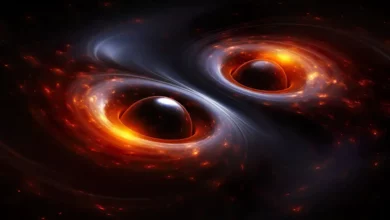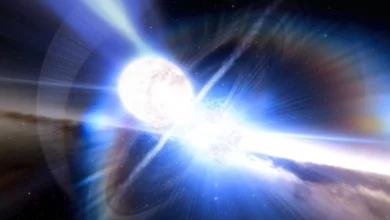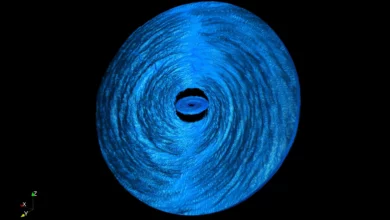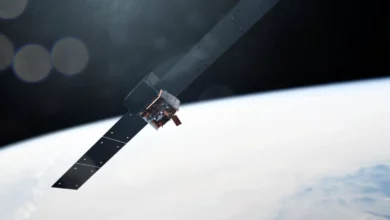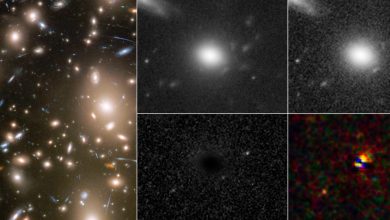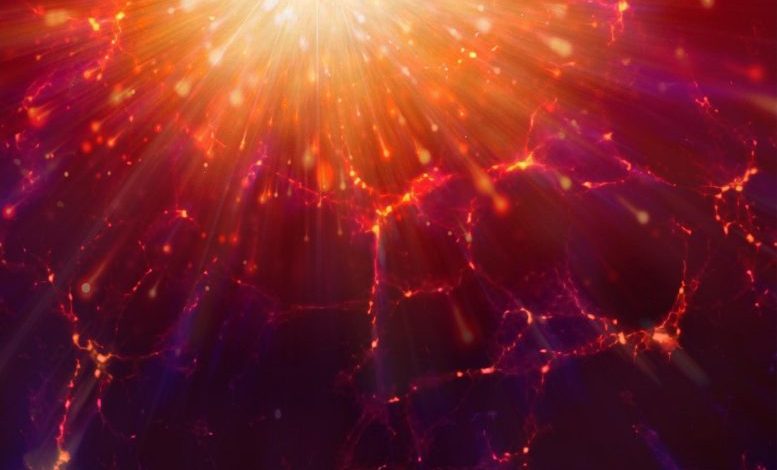
Scientists including MIT’s Jacqueline Hewitt and Nicholas Kern share long-awaited results, getting closer to the universe’s first stars.
All through history, humans have created and shared stories that ponder the creation of stars — what they are and how the first stars came to be. Now, with new results from the Hydrogen Epoch of Reionization Array (HERA), a radio telescope located at the South Africa Karoo Astronomy Reserve, MIT scientists are one small, but significant, step closer to understanding that history.
HERA researchers are looking for the earliest signs of star formation and galaxy structure. Specifically, scientists including Jacqueline Hewitt, the Julius A. Stratton Professor of Physics at MIT, are trying to understand what happened during a period called the cosmic dawn, which occurred about 400 million years after the Big Bang. In early fall 2021, Hewitt, Nicholas Kern, a Pappalardo Fellow in Physics at the MIT Kavli Institute for Astrophysics and Space Research, and other researchers from the international collaboration finalized the long-awaited results collected and analyzed over four years, during the first stages of the telescope’s construction.
Their study, published on February 7, 2022, in the Astrophysical Journal, presents new upper limits on radio signals from cosmic hydrogen, which indicates early star formation and gives scientists a clearer picture of when the first stars and galaxies formed. These findings narrow down the theoretical models that hypothesize on the origins of the cosmic dawn.
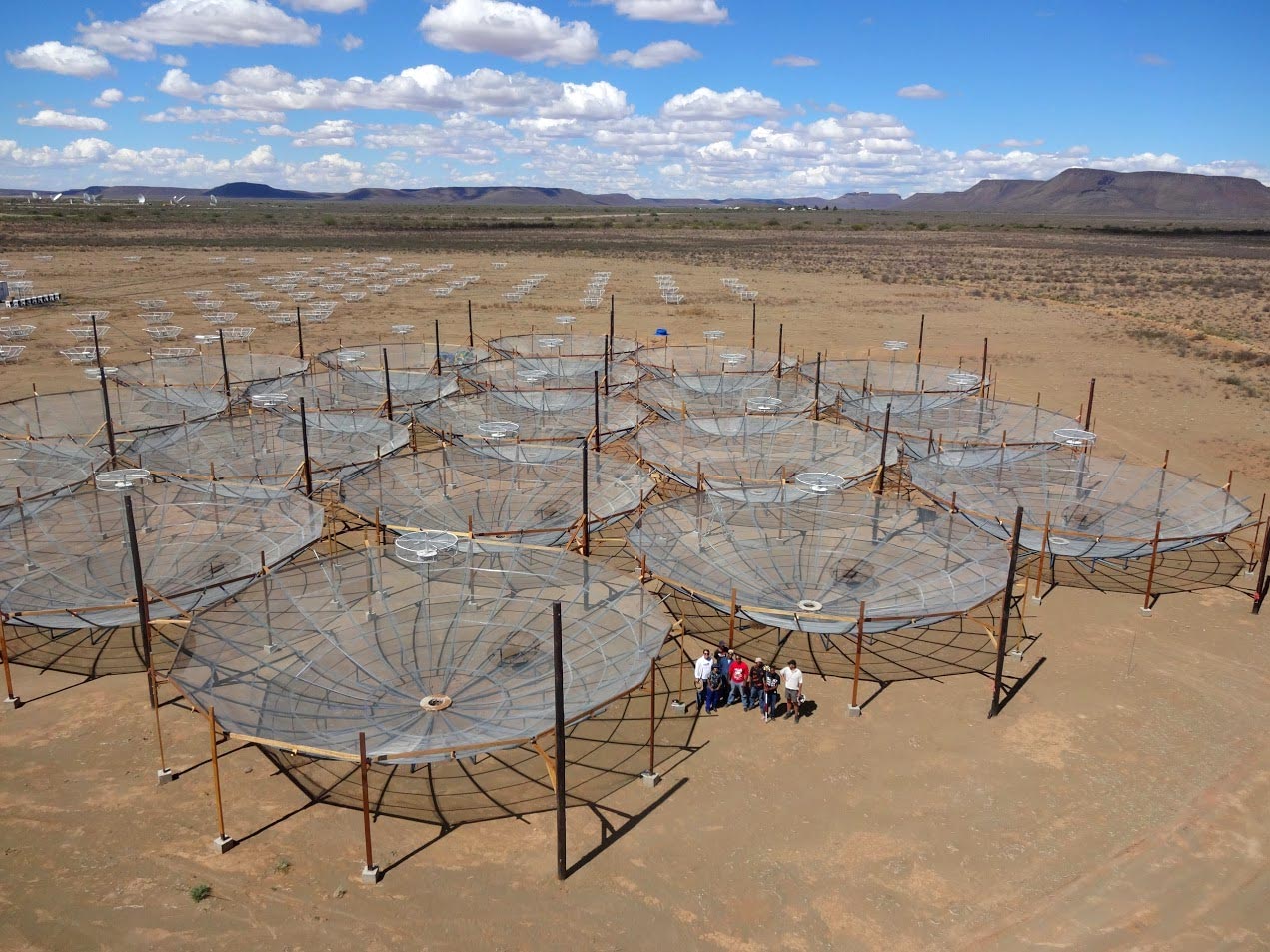
The HERA findings are in part so significant because they were collected at such an early stage in HERA’s development. The telescope, which operates as an array of radio dishes, currently sits at just a fraction of its ultimate size — the data were collected from just 39 of HERA’s 52 deployed antennae. In its full form, there will be 350 total antennae. Once fully constructed, HERA will be sensitive enough to gather even larger datasets and information from further away, and thus further back in time.
“We’re not yet doing fully what we can do,” says Kern, the paper’s lead author. “This result is a demonstration of the telescope as an entity. It’s a demonstration of a first pass at an analysis of the data, which is kind of a framework, a bedrock, if you will, going forward for all future analysis.”
Seeking a signal
To look back at the cosmic dawn, HERA uses low-frequency radio waves to identify signals that are not easily observed. This is different from other telescopes, such as the Hubble Space Telescope, which observe structures like galaxies that comprise just 5 percent of the observable matter in space. The other 95 percent of matter is what is between galaxies, including low-density hydrogen. With HERA, scientists can look at what is going on between galaxies and use that information to infer what galaxies are doing that we cannot observe, and how galaxy formation influences the space around it.
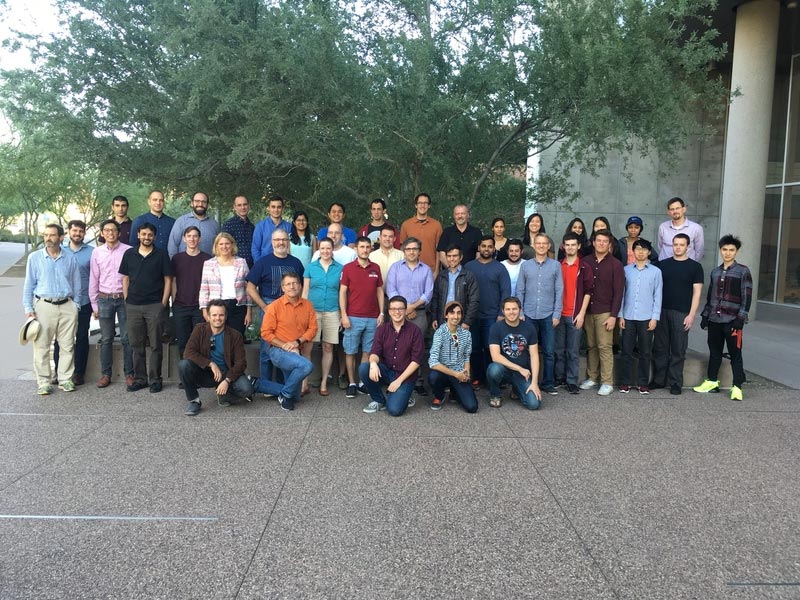
To understand this period in the universe’s history, scientists are looking for the “spin flip signal,” also known as the 21-centimeter line, which is the wavelength of neutral hydrogen gas. This radio signal comes from intergalactic material between galaxies and is produced by the emission and/or absorption of hydrogen atoms given off through this transition.
“What we’re looking at with HERA is: What does the spin flip signal look like during this era?” says Steve Furlanetto, the HERA project’s lead theorist and an associate professor of physics and astronomy at the University of California at Los Angeles.
Identifying the Epoch of Reionization, or the timing of when the signal is observed, is what’s important, he says. “We want to know if [the signal] is in absorption, which would mean it’s before X-rays, or in emission, which is after X-rays. And then we want to see if it disappears because of reionization.”
The signal has two signatures, or processes, that can be captured. The signal is first altered when stars heat the hydrogen gas. The second part, which is what HERA has so far been looking for, is the disappearance of the 21 cm signal, which happens when the hydrogen is ionized by the energy produced by additional star formation. This signature indicates that stars have been created.
The 21 cm line from the cosmic dawn has not yet been definitively detected. However, the new results from HERA provide data — more sensitive than previous results by a factor of 10 — on the nature of the spin flip signal from when the universe was 500 million years old.
A first look
With these results, the HERA team has been able to provide evidence that rule out several possible theories about galaxy formation. Most notably, the data show that there must have been some mechanism for heating up the hydrogen in space, which means that galaxies must have black holes.
“If you had galaxies that didn’t have black holes, that’s basically something you can rule out,” Furnaletto says. “There must be heating, which, in the context of these models, means that there must be black holes near which X-rays are produced.”
With funding from the Gordon and Betty Moore Foundation and the National Science Foundation, HERA will operate at 350 antennas and with a new antenna design that will allow the telescope to capture lower frequency radio waves and view points at higher redshifts, effectively seeing further back in time.
Hewitt, project lead on expanding HERA’s signal capacity, has been working on the question of when the earliest stars formed since 2004. She has led the prototyping of the new low-frequency components, and is developing more techniques to analyze the current and future datasets. The new antennae design, from Cambridge University, should be installed by early 2022, and will dramatically increase the range of information they are able to obtain.
“This extension to lower frequencies is important because it gets us to this period before the first stars,” says Hewitt, explaining that the increased range will help them learn more about earlier stages of cosmic history.
“It’s amazing how it works. You get kind of jaded, but sometimes I stop and think, ‘I’m building an instrument that looks back in time 13 billion years’, you know?” said Hewitt. “That’s kind of amazing that we can actually do that.”
Reference: “First Results from HERA Phase I: Upper Limits on the Epoch of Reionization 21 cm Power Spectrum” by Zara Abdurashidova, James E. Aguirre, Paul Alexander, Zaki S. Ali, Yanga Balfour, Adam P. Beardsley, Gianni Bernardi, Tashalee S. Billings, Judd D. Bowman, Richard F. Bradley, Philip Bull, Jacob Burba, Steve Carey, Chris L. Carilli, Carina Cheng, David R. DeBoer, Matt Dexter, Eloy de Lera Acedo, Taylor Dibblee-Barkman, Joshua S. Dillon, John Ely, Aaron Ewall-Wice, Nicolas Fagnoni, Randall Fritz, Steven R. Furlanetto, Kingsley Gale-Sides, Brian Glendenning, Deepthi Gorthi, Bradley Greig, Jasper Grobbelaar, Ziyaad Halday, Bryna J. Hazelton, Jacqueline N. Hewitt, Jack Hickish, Daniel C. Jacobs, Austin Julius, Nicholas S. Kern, Joshua Kerrigan, Piyanat Kittiwisit, Saul A. Kohn, Matthew Kolopanis, Adam Lanman, Paul La Plante, Telalo Lekalake, David Lewis, Adrian Liu, David MacMahon, Lourence Malan, Cresshim Malgas, Matthys Maree, Zachary E. Martinot, Eunice Matsetela, Andrei Mesinger, Mathakane Molewa, Miguel F. Morales, Tshegofalang Mosiane, Steven G. Murray, Abraham R. Neben, Bojan Nikolic, Chuneeta D. Nunhokee, Aaron R. Parsons, Nipanjana Patra, Robert Pascua, Samantha Pieterse, Jonathan C. Pober, Nima Razavi-Ghods, Jon Ringuette, James Robnett, Kathryn Rosie, Peter Sims, Saurabh Singh, Craig Smith, Angelo Syce, Nithyanandan Thyagarajan, Peter K. G. Williams, Haoxuan Zheng and The HERA Collaboration, 7 February 2022, Astrophysical Journal.
DOI: 10.3847/1538-4357/ac1c78
This work is supported, in part, by the National Science Foundation with institutional support from the HERA collaboration partners, and by the Gordon and Betty Moore Foundation. HERA is hosted by the South African Radio Astronomy Observatory, which is a facility of the National Research Foundation, an agency of the Department of Science and Innovation.

